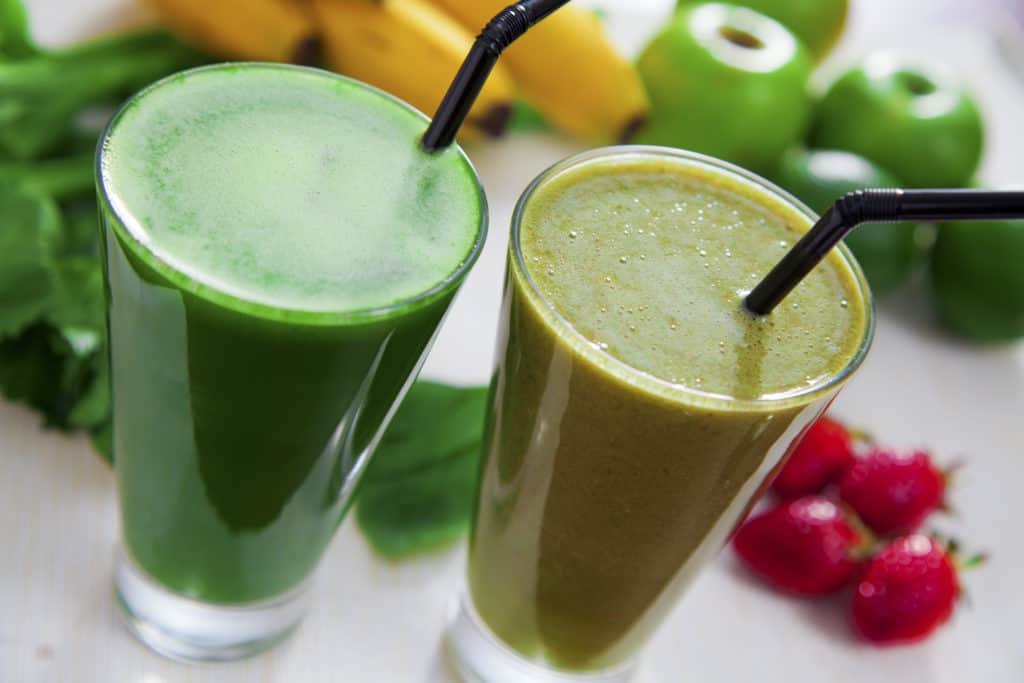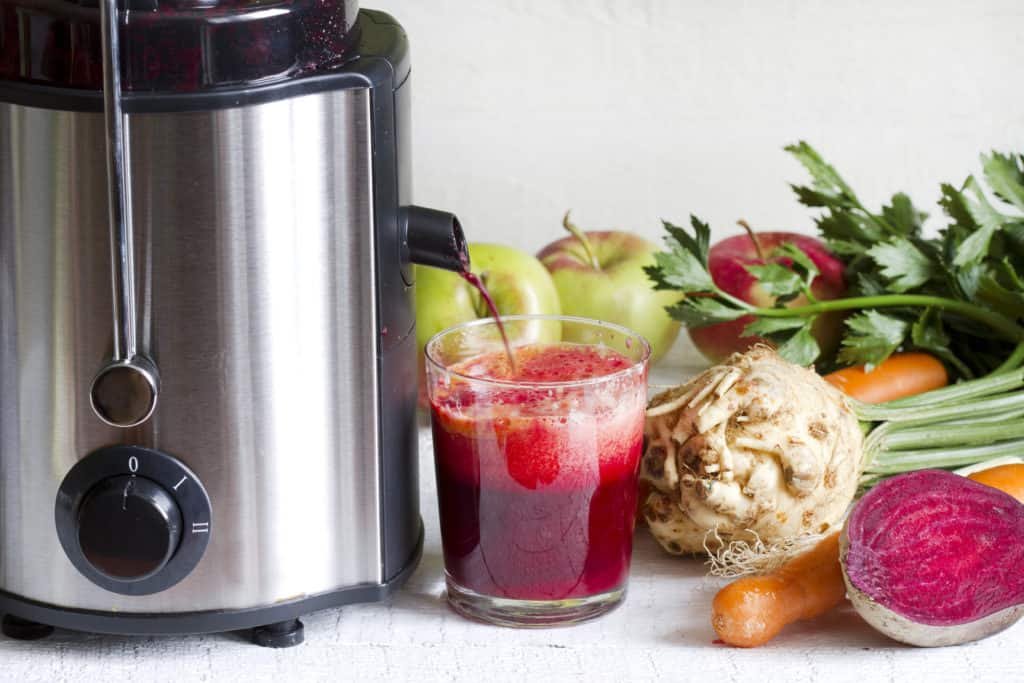
Table of Contents
A juice cleanse, according to its advocates, helps with the body’s natural self-healing processes, flushing sugar,caffeine, refined and other energy-depleting foods and substances out of your diet, and sets in motion practices for a healthier way of eating.
What is a Juice Cleanse?
Basically, a juice cleanse is a detox diet in which individuals exclusively consume fruit and vegetable juice for a few days or weeks. That means there is no other source of nutrition except fruit and vegetable juice. No solid food is consumed during this period.
Juice cleanse may include a couple of smoothies per day for the continued supply of nutrients. In other programs, vegan snacks and meals may take center stage.
The main component of the program is raw fruit or vegetable juice which contains a number of easily absorbable antioxidants, nutrients, and phytochemicals. If you need more energy, you may want to include gluten-free snacks and meals. You may also do that if you are doing your first juice cleanse or want to avoid feeling uncomfortable.
If you are planning a juice cleanse for longer than one day, consult a medical professional, especially if you have a known health condition.
You can easily prepare any juice to cleanse at home using a juice press or juicer. In certain cities, there are a number of chain stores and juice bars that prepare juice cleanses. If you cannot find any near you, you can order it online.
How to Do a Juice Cleanse

One to five days before starting a juice cleanse, you need to prepare yourself. Preparation involves reducing foods such as wheat, dairy products, alcohol, meat, refined sugar, coffee, and nicotine. That’s in a bid to avoid cravings, headaches, and certain withdrawal symptoms. At the same time, you may want to increase your fruits, fluids, and vegetable intake.
The 3-Day Juice Cleanse
To succeed in your juice cleanse efforts, you need to include some 32 ounces of smoothie or juice. Half of that should ideally be green vegetable juice. Typically, a 3-day juice cleanse will include the following:
•Lukewarm water and some lemon juice as soon as you wake up.
•Juice, preferably from green vegetables between 8 am to 9 am.
•Juice, smoothie or cleanse food between 10.30 am and 11.30 am.
•Juice, smoothie or cleanse food between 1 pm and 2 pm.
•Juice such as apple, carrot, and beet juice between 3 pm and 4 pm.
•Juice, smoothie or cleanse food between 5 pm and 6 pm.
•Smoothie, almond milk or cashew nut milk between 6 pm and 8 pm.
If you want the juice cleanse to be gentle, it is important that you include some vegan food or smoothies. To eliminate toxins from your body, it is important that you take lukewarm water in between the juice intakes.
Did you know that you can optimize nutrient absorption by slowly drinking the juice and not gulping it down? You can take your juice in 2-hour intervals with the last drink 3 hours before going to bed.
Some of the fruits and vegetables used to make juice include leafy greens, beets, spinach, apple, cabbage, carrot, kale, and celery. It is easier to prepare the juice in the morning or evening, enough for a whole day. The juice should ideally be consumed fresh and you may also want to store it for later use.
If you have persistent hunger pangs or you feel uncomfortable, you may take a salad, celery, carrot, vegetable broth or piece of fruit. A number of people may even want to modify their juice cleanse by including a lunch or dinner salad.
What to Eat After a Juice Cleanse

As soon as you complete the juice cleanse, you will have to reintroduce food into your diet gradually over the next few days. Just ensure you don’t rush it. The first solids are vegetables, vegetable soup, nuts and seeds for a day or two after the cleanse.
Try to eat protein in small amounts, such as salmon, cheese, and eggs, for about four to five days. You can get back on track with home-cooked meals of vegetables, fruits, lean protein, unrefined whole grains and good fats like avocado, olive oil, and nuts, making these healthy foods part of your daily meal plan.
It is not advisable to avoid all forms of physical activities when on a juice cleanse program. Walking over short distances can give a boost to lymphatic and blood circulation. Massage, skin brushing, and contrast showers also work wonders.
To make sure the process of detoxification happens correctly, you could incorporate mindfulness meditation, progressive muscle relaxation, and diaphragmatic breathing. Also, get a lot of rest by sleeping early or taking naps.
Juice Cleanse Side Effects
If a juice cleanse makes you feel not so good physically, that is normal. Symptoms of significant healing reactions in the first week of juice take the form of a type of “withdrawal syndrome”. This is caused by a temporary imbalance in the body’s ability to adapt, which can cause discomforts such as headache and hunger.
Also, your body may suffer for not being used to a juice cleanse. Don’t be discouraged. It is just a sign that your body is getting rid of the toxins it had been harboring. The following is a list of the effects of the most frequently occurring reactions:
Hunger spikes
Dizziness or headaches
Bad breath and body odor
Nausea that rarely causes vomiting
Coated tongue
Muscle aches and pains
Acne, skin rashes
Juice Cleanse Pros and Cons

When you embark on a juice cleanse, your body will be affected in a number of ways including the following:
Pros
•Discovering Hidden Ailments
Juice cleanse typically involves eliminating gluten, wheat, fermented foods, and dairy from the diet. If you have unwanted reactions to any of these foods, you will have a good idea of the culprit.
•Losing Water Weight
Water is stored in your muscles as a solute of glycogen. A juice cleanse is essentially a low-calorie diet that promotes the burning of the stored glycogen. In the process, the fluid becomes of no use thus enabling you to lose water weight.
•Calming Appetite
On a temporary basis, a juice cleanse is effective when it comes to preventing comfort eating. As soon as the cleanse ends, you will be satisfied with as little food as possible. If you have been looking to change your eating behavior, a juice cleanse will show you what’s possible.
•Getting a Nutrient Boost
By replacing your normal diet with healthy juice, you will be able to get all the nutrients you were missing. After all, the juices contain a lot of vitamins, minerals, and antioxidants. They are easy to absorb given the liquid form in which you ingest them.
•Healing The Cells
The exclusive consumption of vegan based juice promotes the optimal working of the cells including their regeneration. After all, a juice cleanse eliminates free radicals that cause inflammation from your diet and enables DNA to function properly.
Cons
You Might Not Need a Juice Cleanse After All
In general terms, if you eat healthy most of the time, then your body removes toxins naturally every day. The liver contains detoxifying enzymes that break down alcohol and other drugs, and the kidneys can deal with water-soluble toxins.
A switch to a juice-based cleanse could turn out worse than good. A detoxifying juice that makes you feel slow, low in energy, or irritable is of little use. If you are not in need of this type of detoxification over a long period of time, the best way to detox is through healthy eating, exercise, and spending time outdoors enjoying your favorite physical activities.
Lack of Fiber
Juicing can remove nearly all of the fiber that is present in whole fruits and vegetables whether found in pulp, skin, and seeds. The lower the fiber content in the juice, the more fructose the body absorbs. Therefore, opt for more vegetables than fruits. You will also feel less satisfied if you have less fiber.
Fiber also works by slowing the absorption of sugar into the blood, making sugar spike less noticeable. On a juice cleanse, you will remove fiber-rich foods from your diet which will adversely affect your digestion to a greater extent.
Not Good for Diabetics
When vegetables and fruits are juiced, the natural sugar content found in them is much higher than in their whole or solid form, meaning that for every piece of fruit you would normally eat in its solid state you would need a greater number if you wanted to make a juice from it.
Because of the limited production of insulin, it is best for people with diabetes to avoid fluctuations in their blood sugar level. Fluctuating blood sugar can cause a loss of energy even for people without diabetes once the blood sugar level has dropped.
Fructose, which is found in most fruits, can also be eliminated from the bloodstream by the liver. By being on a juice diet, your liver can become overwhelmed and turn sugar into liver fat instead, putting you at risk for insulin resistance – the leading cause of diabetes – or heart disease.
This is why, for those of you with diabetes, a juice detox is not something that you would be willing to add to your diabetic diet plan.
Loss of Muscle Mass
For the most part, detox juice diets are low in protein and amino acids. On a week-long cleanse you may lose as much as one pound of muscle mass per day and you can also burn fewer calories even when you’re not exercising once you start losing muscle mass, so you can easily regain your weight and chances are it will be gained as fat. Therefore, if you are trying to build lean muscle, a juice diet is not the best option.
Think about how you feel right after the cleanse, everything you learned and whatever you would like to keep in mind when you start eating solid foods again. Include juices in your regular diet rather than just a fad you take part in once or twice a year. If you drink green juice regularly, you will enjoy more benefits than if you did it occasionally with a three-day detox.






